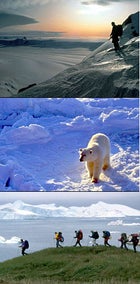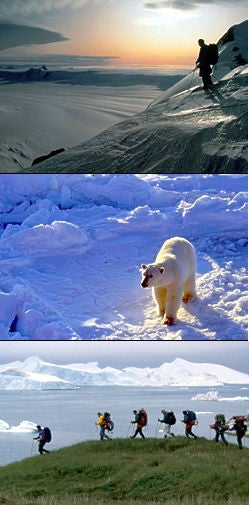Lured by icefloe wildlife and the world’s last remaining true wilderness, increasing numbers of would-be Shackletons are venturing beyond the Arctic and Antarctic Circles—the chilly climes 66.5 degrees north and 66.5 south of the equator. Nearly 10,000 people visited Antarctica in Y2K (up from fewer than 1,000 just 25 years ago). But are the plants and animals ready for a wave of human visitors? Hardly. These extremely fragile ecosystems require extremely low-impact travel.

Most Polar Animals, be they musk oxen in Greenland or Antarctic chinstrap penguins, have never seen or heard a human, much less a neon anorak or a crackling two-way radio. Your presence will be stressful. To minimize your impact, stay at least 100 feet away from animals at all times—and don’t even think about feeding them.
Fire is a constant danger at the poles, which are the driest regions on the planet (parts of Antarctica get less than two inches of precipitation per year). Open fires, which pose a huge threat to man-made structures, are prohibited.
The fewest plants that can survive the harsh polar climate, including lichens and snow algaes, are protected species that don’t fare well under boot soles. A footprint in polar moss, of which there are some 350 Antarctic varieties, lasts ten years.
Human waste is preserved for decades due to the aridity. Pack it out.
Polar Protection: In addition to high winds and frigid temps, polar travelers should prepare for blistering dry air (bring the thickest lotion you can find, such as Bag Balm), the world’s most intense ozone-hole UV rays (and 40 SPF zinc-oxide), and blinding sunlight (and ultra-dark sunglasses that provide 99–100 percent UV protection).


